Do you feel like your mixes just aren't as blended together as your references or what you hear on the radio or streaming platforms?
This might be because your tracks are lacking “glue” compression.
Glue compression is when several tracks in a mix, sometimes all of them, are passed through one compressor together. By applying the same compression settings to a group of elements, they sound like they belong together, or, are “glued” together. This is also known as “bus compression” since hardware mixing consoles often had a built-in bus compressor to help “glue” a mix together.
What Does “Glue” Mean In Music?
Having a “glued” together sound in music is highly desirable because all of your sounds and instruments sound like they are together as one element…
Rather than a bunch of separate, disjointed sounds.
The result is blended and professional sound.
How Do You Glue A Song Together?

The key for a “glued together” sound is to process multiple sounds/instruments at the same time with the same effects, especially compression.
The easiest way to accomplish this is to mix using buses. Group all of your major instruments together in a bus, and then apply some group compression or EQ.
For example, you could have a drum buss, guitar or rhythm bus, lead bus, and vocal bus.
On each of these buses, you can apply some processing to glue together each of these sections.
You can then apply some processing to the mix bus, and apply some final glue to your entire track.
Glue Compression Settings For Mix Bus
So with the strategy in mind, how do you go about achieving it? What compression settings should you apply to glue together your tracks?
Every track will be different, so you'll want to apply settings that sound good for your situation.
However, here are some good starting point settings for your mix bus compressor:
- Attack: 3 (slow attack)
- Release: 0.6 or auto (medium release)
- Ratio: 1.5 to 2
- Threshold: Enough to apply 1-2db of compression
- Make-Up: Enough to balance out any loss in volume
What we're looking at here is a slower attack, and a medium release.
Too fast of a release will cause a “pumping” effect, and too slow will kill the dynamics.
So I would use the “auto” setting if you have it on your compressor, or else use your ears and adjust to taste.
This ensures a gentle and subtle level of compression so that you get the gluing effect you want, without squashing out all of the dynamics in your song.
What Type Of Compressor For Glue Compression?
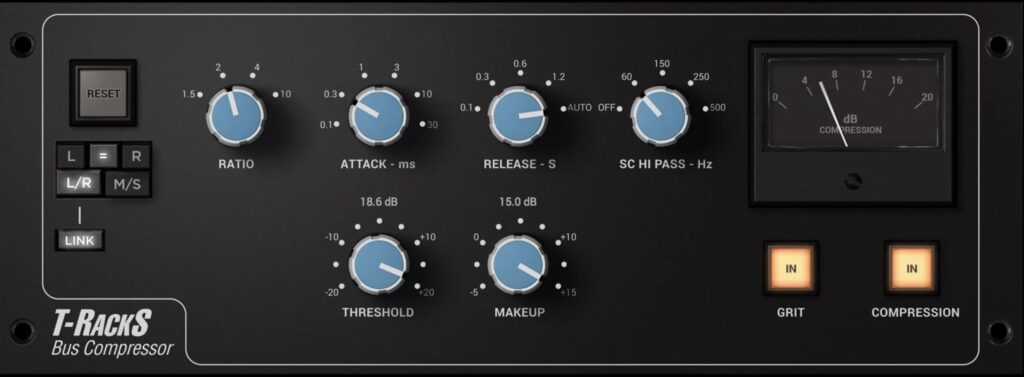
There are 6 different types of compressors, but which one is best for adding glue or bus compression?
Tube and VCA compressors generally going to be your best options.
Tube Compressor
Tube compressors are also known as “variable-mu” or “vari-mu” compressors, and they produce smooth and warm compression.
Tube compressors are great for their pleasant coloration of a sound, but they are not super-fast acting, so don't use them for transient control.
VCA Compressor
VCA is an acronym for “voltage-controlled amplifier,” which is the component at the heart of the circuitry in this type of compressor.
VCA compressors are known for being good on transient-heavy material because of their fast response time.
However, many VCA compressors are also very versatile, and allow you to dial in the compression parameters of threshold, ratio, attack and release time, and makeup gain the way you want.
If you want a more transparent sound, don't set the attack too fast so it wont squash the initial transients of a sound.
Because of the more transparent nature of the VCA, I would would recommend using a VCA compressor on your mix bus.
And a great VCA compressor plug-in you can use is IK Multimedia's Bus Compressor.
This compressor is specifically designed to add that “glue” effect to your productions.
The Bus Compressor is based on the mix bus VCA type compressor of a worldwide known and acknowledged British large format mixing console from the 80's: the SSL console.
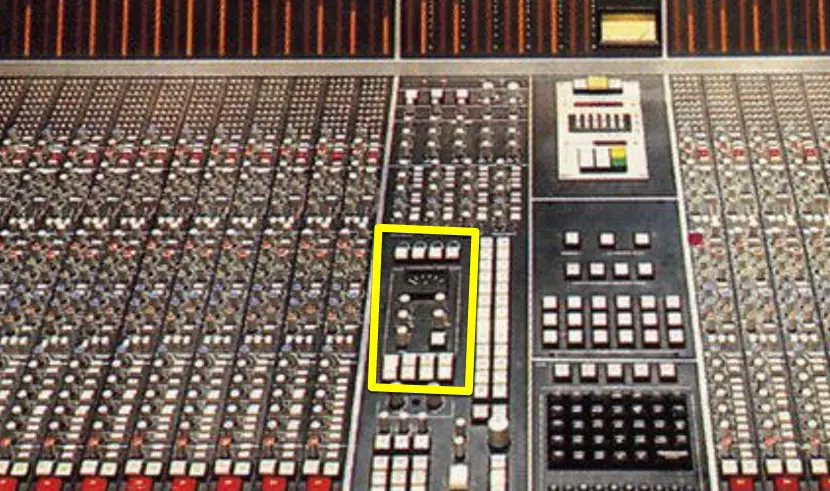
It was used on practically every hit record and major production from the 80's to present days, so much that its sound has almost become a trademark.
This compressor was so widely used that it later became a stand-alone rackmount unit, so that it could be used separately from the large format console.
This made for even more success; a thing that led to many hardware and software clones trying to emulate it.
By the way, if you want to learn more about the 6 different types of compressors, what their pros and cons are, and when you should should use each…
Then check out my article here on which compressor you should choose for your mix, and when.
What Kind Of Compressor Is The Glue (Ableton)?
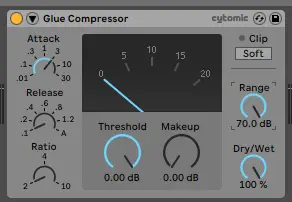
A well-known glue compressor is “The Glue” which is built into Ableton. This compressor is also based on the SSL console bus compressor.
So if you have Ableton, then you already have a modeled version of this famous gluing compressor.
If you don't have Ableton, you probably have some kind of VCA compressor built-in to your DAW which you can use…
Or you can pick up a premium plugin like IK Multimedia's Bus Compressor like I mentioned.
Now let's dive into some specific situations where you might want to add some glue.
How Do You Glue Vocals Together?
If you're wanting to glue a group of vocals together, then again, you'll want to send them all to a bus.
Once they have been sent to a bus, you will then want to place some kind of smoothing compressor on that bus to apply the same level of compression to all of those vocals.
As always, you'll want to use your ears for what sounds best; however, here are some good settings:
- Moderate to heavy compression
- 3:1 Ratio
- Medium release time
How Do You Glue Drums?
Now how do you go about gluing together drums?
Again, apply compression to your drum bus, you are compressing all of your drums at once with one compressor.
With drums, you want to preserve the punchiness that is present in the transients, so with that in mind, some settings you'll want are:
Slow attack, fast release
- Slow attack
- Fast release
- Apply 1-3db of compression
- Apply make-up gain to account for volume reduction
Again, a great compressor to use for this is IK Multimedia's Bus Compressor.
How Do You Glue A Track Together In Mastering?
Okay, so now you're ready to master your track and make your entire song feel cohesive and glued together…
How do you achieve this?
Again, you'll want to use a VCA type compressor like IK Multimedia's Bus Compressor, and you'll want to use a slow attack, and a fast release.
This ensures that you aren't squashing the punchiness of your mix or killing the dynamics.
You'll also want to be very subtle with how much compression your adding, so you may only want to apply 1-2db of compression.
If you overdo the compression you'll end up with a flat-sounding mix, and kill the energy.
Finally, you'll use the make-up gain to compensate for the volume you are reducing with the compression. You want the volume level to be the same after compression as before.
Compression Settings:
- Attack: 10-30ms
- Release: 0.1 or auto
- Ratio: 2-4
- Threshold: Enough to apply 1-2db of compression
- Make-Up: Enough to compensate for volume decrease
5 Plugins For Adding “Glue” To Your Mixes
So now that we know how to glue together our tracks, what are some of the best plugins to achieve this glued sound?
Bus Compressor by IK Multimedia

You're probably tired of hearing me talk about this plugin, but I have to mention again because this is the gold standard for bus compression and adding glue to your mixes.
British Channel by IK Multimedia
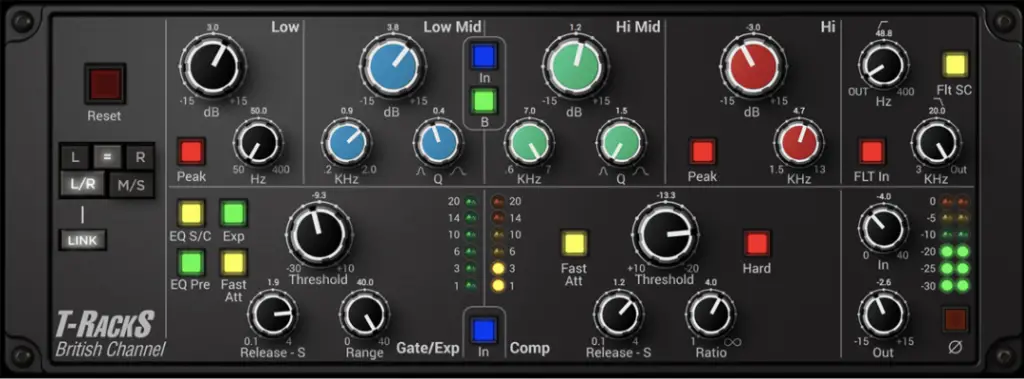
The British Channel by IK Multimedia is modeled after the channel strips on the same SSL console that the previously mentioned Bus Compressor comes from.
This plugin is great for adding glue because not only can it add compression, but it also coms with an EQ and gate/expander built-in, granting you flexibility and the option to shape the EQ curve for a group of instruments, or adjust the sustain.
As an American though, every time I use this plugin, I get the overwhelming desire to dump some tea in the nearest body of water that I can find…
I have no idea why…
Dyna-Mu by IK Multimedia
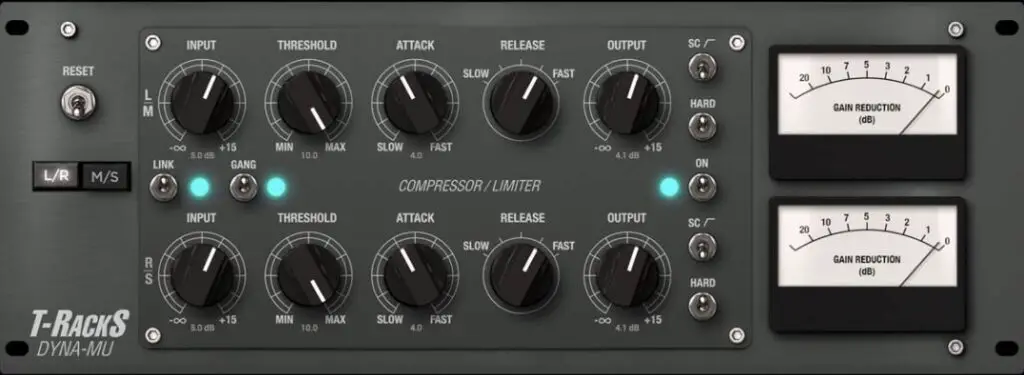
Here we have yet another IK Multimedia plugin called the the Dyna-Mu.
Dyna-mu is an amazing emulation of a well-known American tube compressor celebrated for its warm sound and vivid colored tone, which thanks to IK Multimedia’s virtual circuit modeling, is perfectly recreated and indistinguishable from the hardware.
The Dyna-Mu is an emulation of the Manley SLAM!, a tube mic preamp and Limiter.
At the studio I studied music production and audio engineering at, we used the Manley on every single vocal recording to create a warm and beautifully glossy sound.
This is a great compressor for gluing together a group of tracks if you're also wanting to add some coloration and warmth.
TAIP by Baby Audio
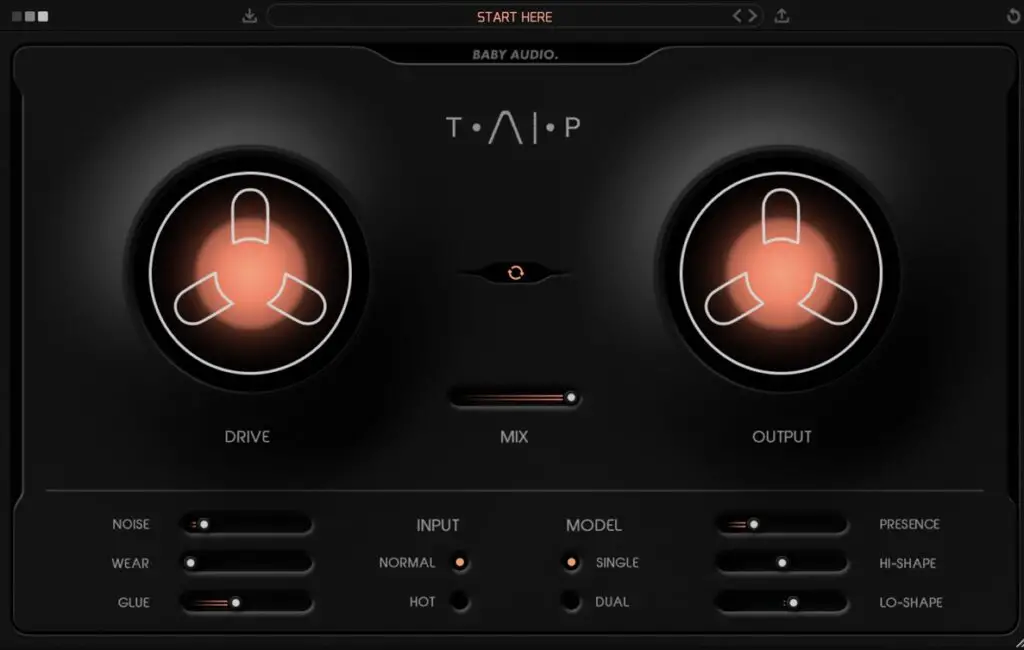
Compression isn't the only way to add glue to your tracks, you can also add some tape saturation.
Tape saturation works to glue together your tracks because not only does tape saturation add some subtle compression…
But it will also apply the same saturation “curve” to a group of tracks, making them sound like a cohesive group.
Back in the days before computers and digital recorders, recording studios would cut the final masters of songs on tape.
Therefore, literally every single track was having tape saturation applied, and as a consequence, making them a cohesive whole.
A great plugin for this is TAIP by Baby Audio.
As you can see in the image above, even has a “Glue” setting built-in to it to help you apply that classic tape glue sound.
Satin by U-He
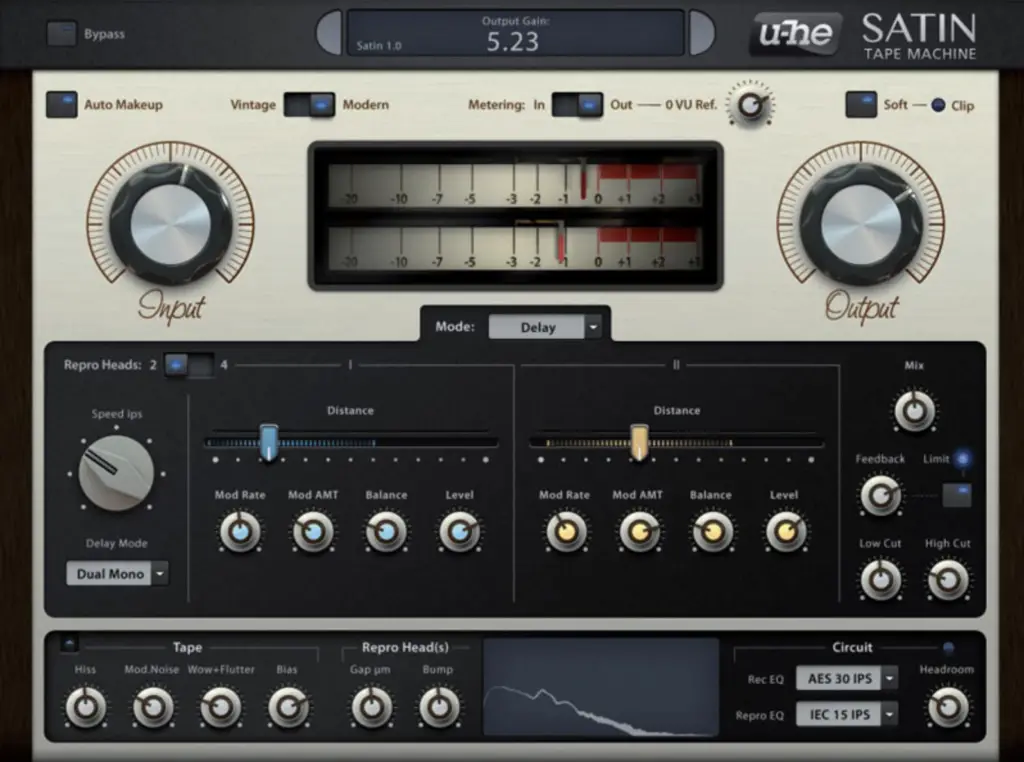
While TAIP is a plugin built for the DAW era with a minimal amount of frills, if you're wanting a more classic tape machine plugin, then U-he's Satin is a great option.
Satin takes you back to the Golden Age of magnetic tape recording.
U-he's intention was to recreate all kinds of tape machines in software, from the ground up, and they nail it with Satin.
They also added the old noise-reduction systems that were often (mis)used for timbral compression effects. Then more heads and a global feedback path, which made an uber-tape-delay and realistic ‘one-shot' tape flanging possible.
Conclusion
Creating a glued together sound on your mixes is key to achieving a professional quality production, and glue can be added by adding subtle compression or saturation to a group of tracks, or even the entire production, at once.
Of course, bus compression is just one piece of the mixing and mastering puzzle.
If you want a complete step-by-step mixing checklist so you can finish more songs, faster…
Then grab my free rapid mixing checklist here.
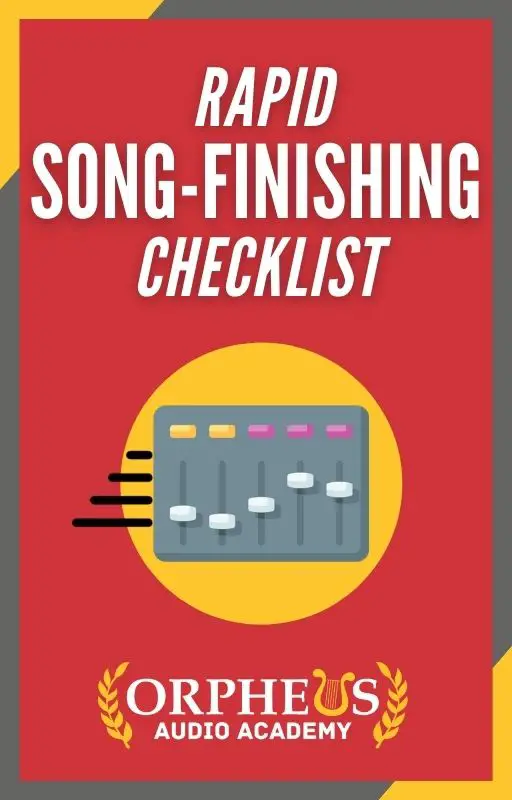
Create Better Songs, Faster
Click below to download my free song-finishing checklist to help you create radio-ready songs without taking months to complete them.
I hope you got value from this article on how to glue together your mixes.
If so, feel free to share, and let me know in the comments below…

